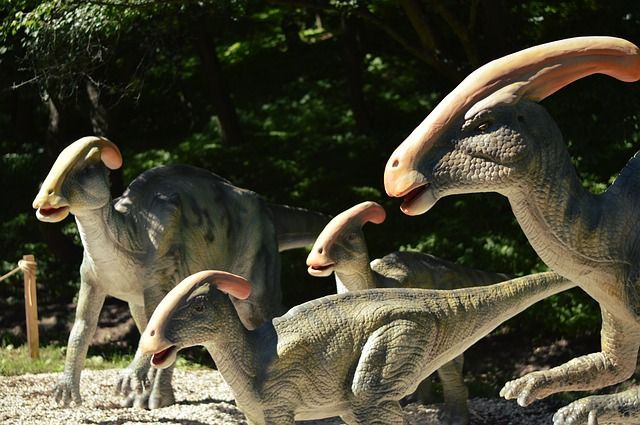Scientists Find Remains Of An Ancient Cancer In Fossilized Dinosaur Tail

KEY POINTS
- Researchers found remnants of a tumor in the fossilized tail of a hadrosaur
- The tumor was from Langerhans cell histiocytosis which still occurs in people
- It usually occurs within children between the ages of two and ten years and may cause swelling and pain but they often recover
Researchers have found the remnants of an ancient human virus within a dinosaur.
The fossilized tail of a young Hadrosaur, which lived in Alberta, Canada, is home to the remains of a 60 million-year-old tumor.
The hadrosaur was a giant duck-billed herbivore. According to researchers, they do not know what killed the dinosaur, but at one point, it allegedly swished its heavy tail one last time down the prairie and died.
Of the 11 pieces of the tail recovered, eight segments exhibited different pathological conditions. Some of them had unusual lesions that had never before been seen in dinosaurs let alone, the species.
Evolutionary anatomist, Hila May from Tel Aviv University in Israel, stated there were big cavities in two of the vertebrae segments.
They were similar to the cavities that were produced by the tumors associated with the Langerhans cell histiocytosis, which still currently exists in people.
It was the particular shape of the cavities which attracted the attention of researchers. Dr. May claimed these were similar to the ones that were produced by tumors associated with LCH.
She added that LCH tumors could be very painful and suddenly occur in the bones of children between the ages of two and ten years. Though, these tumors may disappear without intervention in most cases.
The researchers scanned the vertebrae and came up with a computerized reconstruction of the tumor and the blood vessels feeding it. The confirmation came later that it was LCH.
Dr. May said the surprise findings show the disease is not particularly unique to people, and it can survive millions of years.
It is not the first time though that LCH has been determined in other animals considering previous research suggests a similar pathology in animals such as shrews and even tigers.
The condition, Langerhans cell histiocytosis, is a rare cancer. The excess immune system cells develop and become tumors, which are known as granulomas.
It may affect young children and causes pain and swelling, though the prognoses of the disease are usually good.
The causes of the cancer type are still being deliberated. However, the new piece of evidence lends more to the pathogenesis of this rare and apparently ancient illness.
According to paleo-pathologist, Israel Hershkovitz, the objective of these studies is to understand the cause of these diseases. It is also to evaluate the mechanisms which have allowed them to survive and develop over a long period.





















